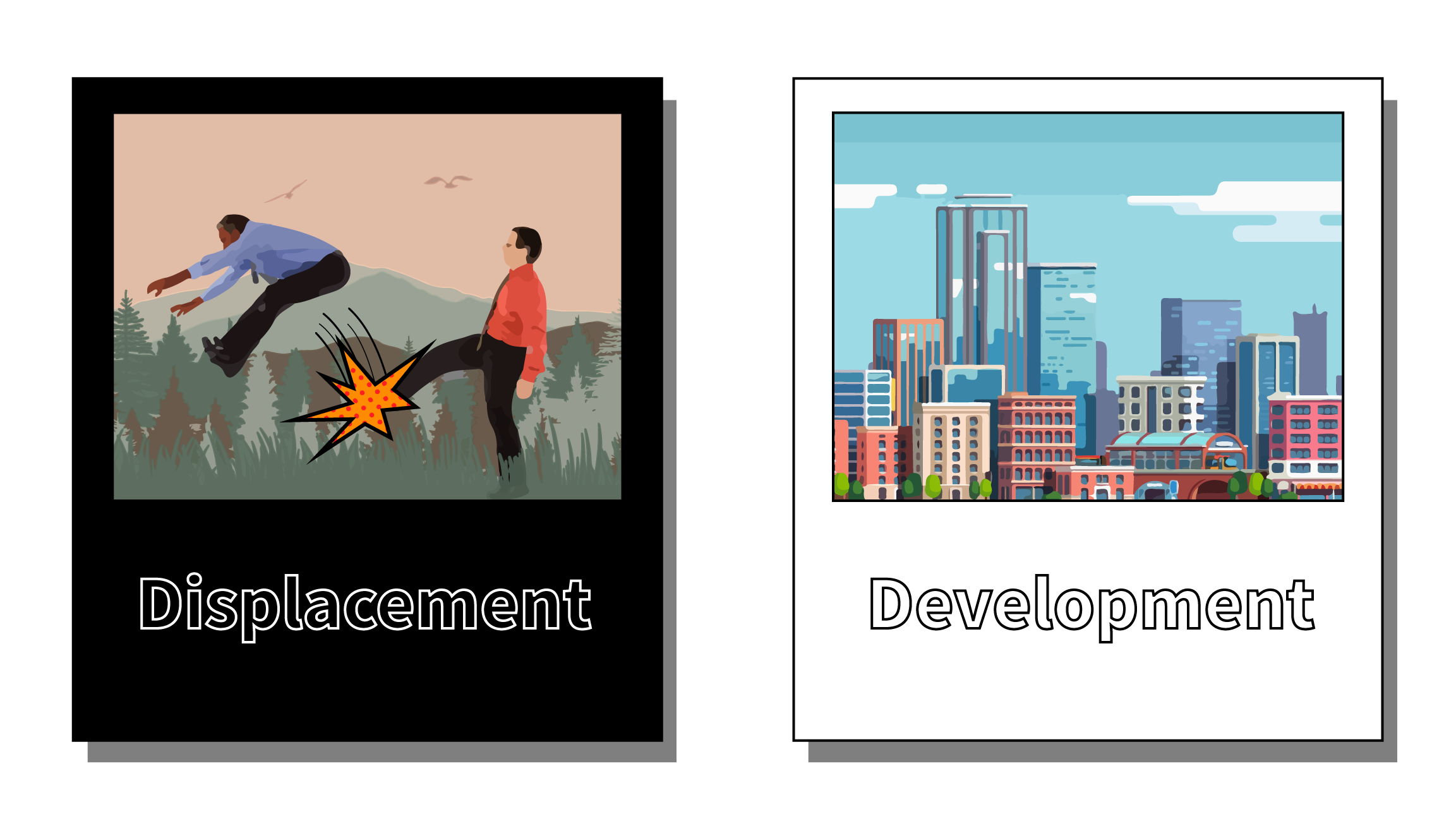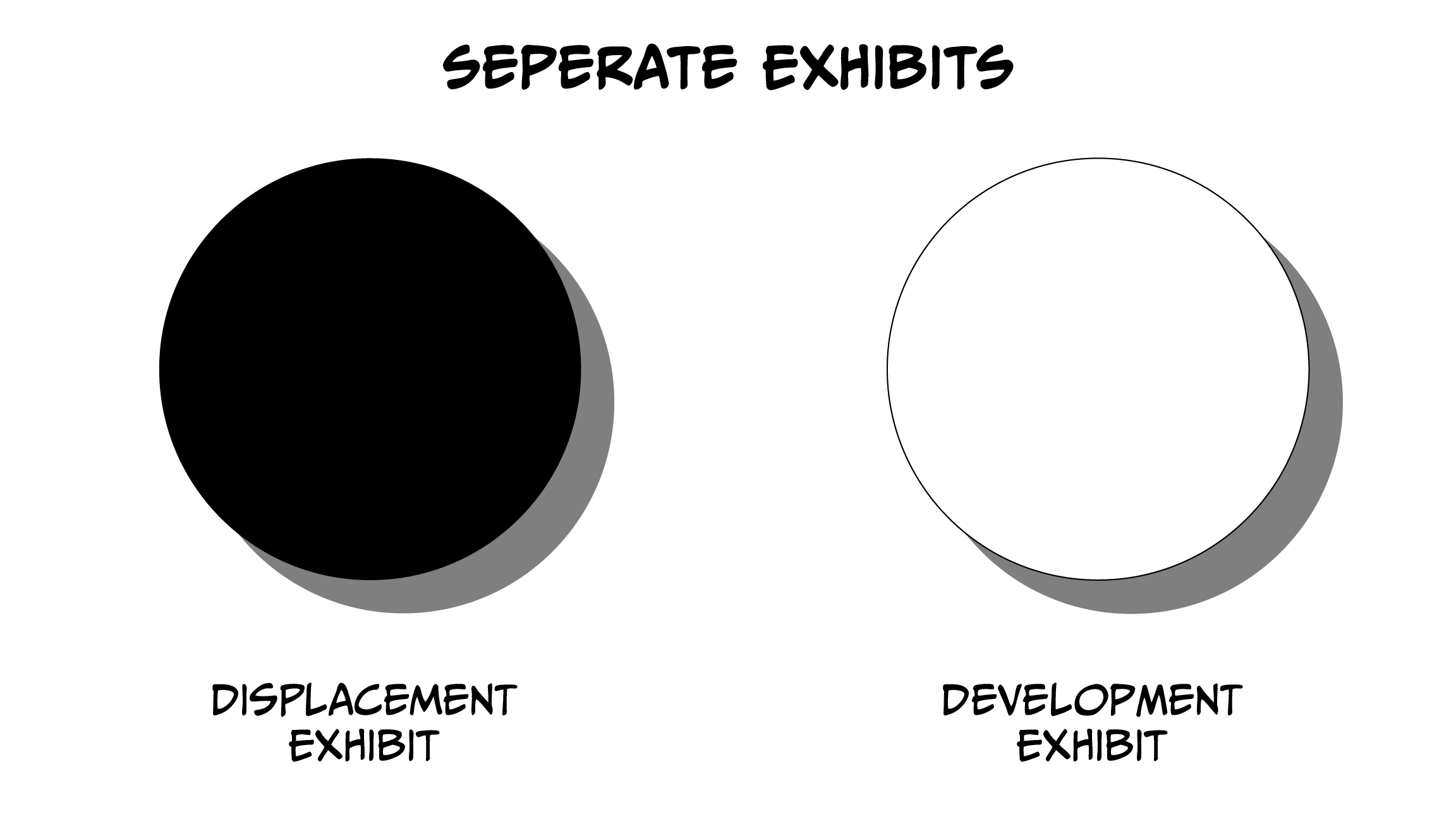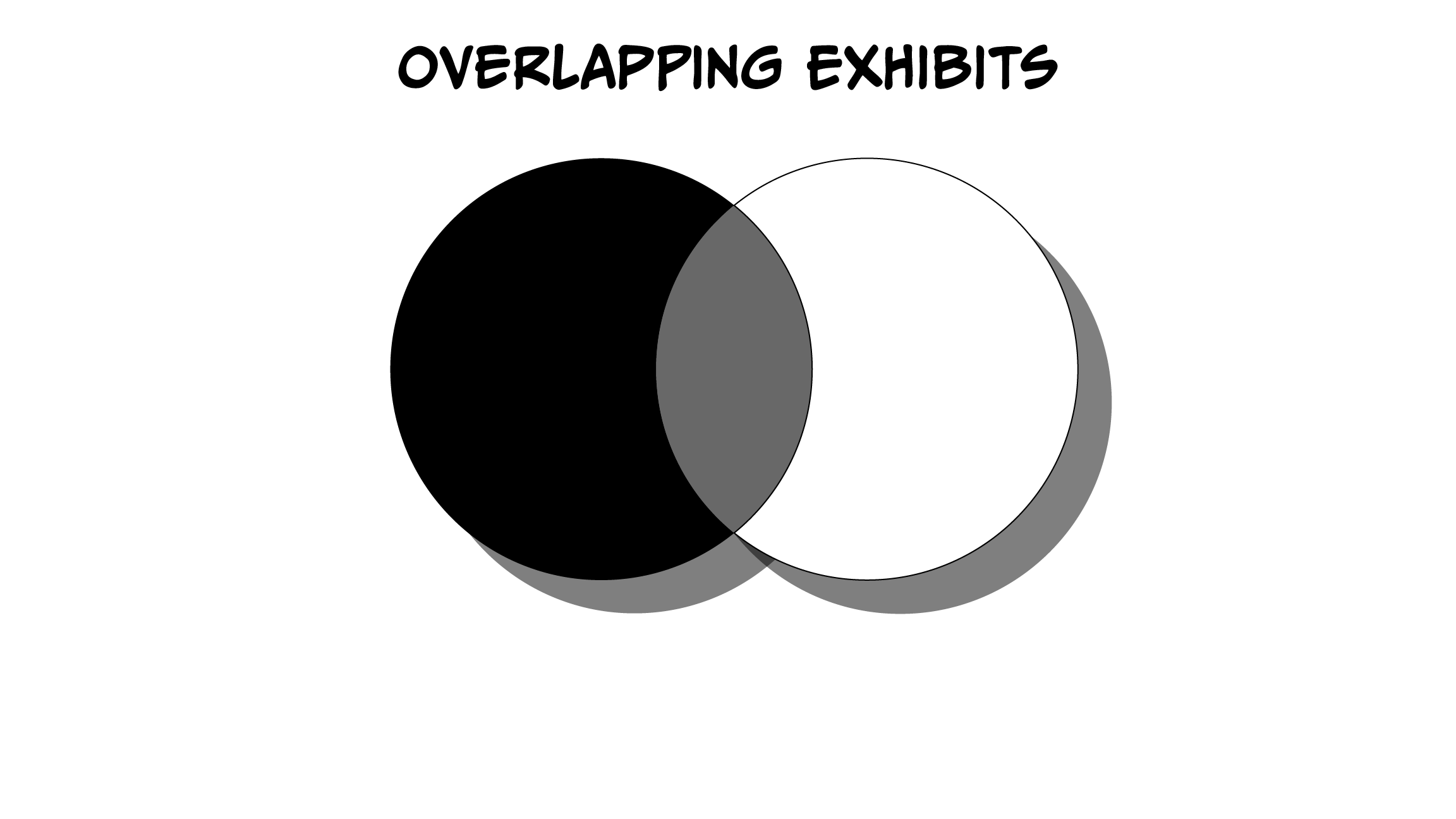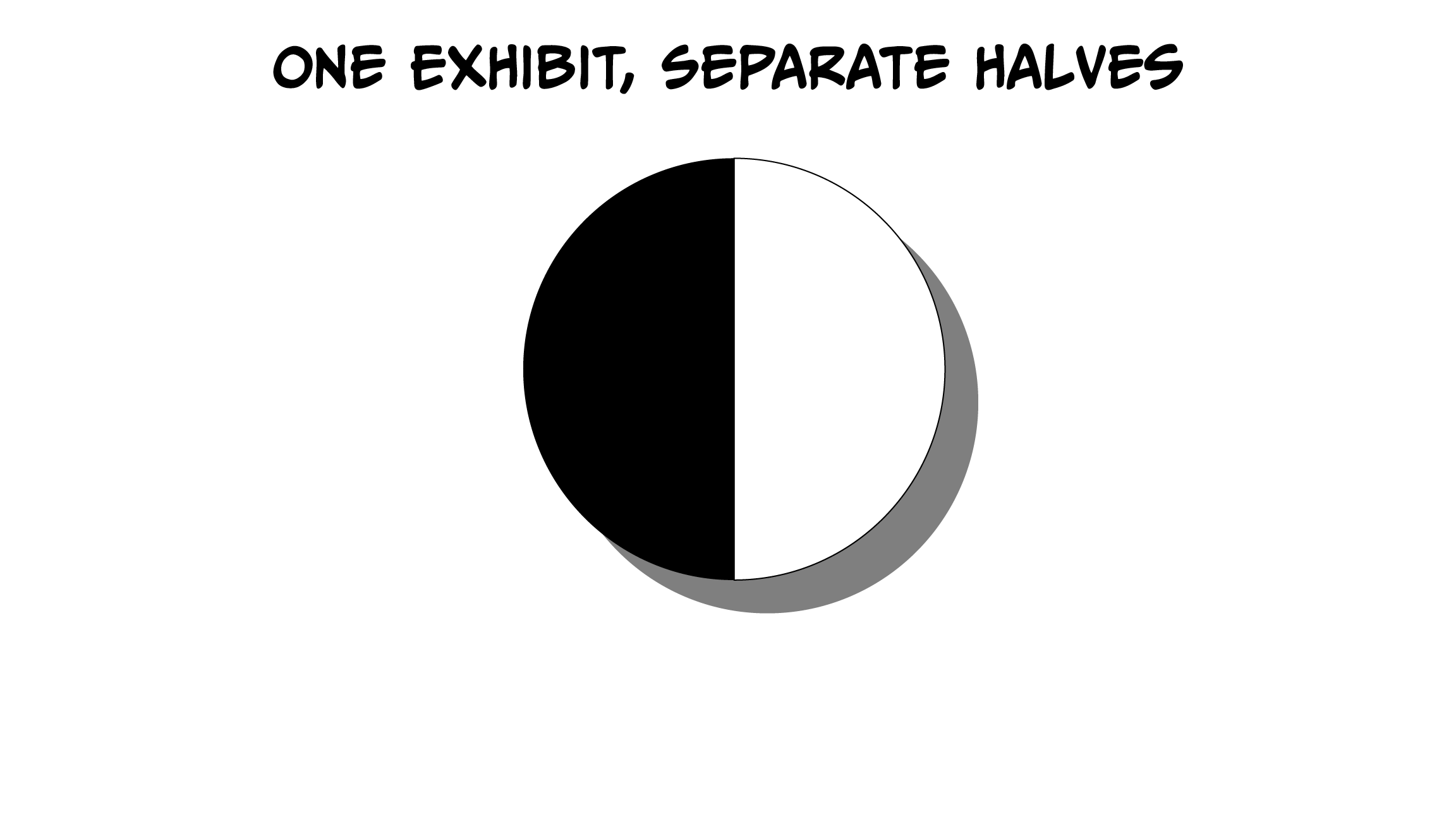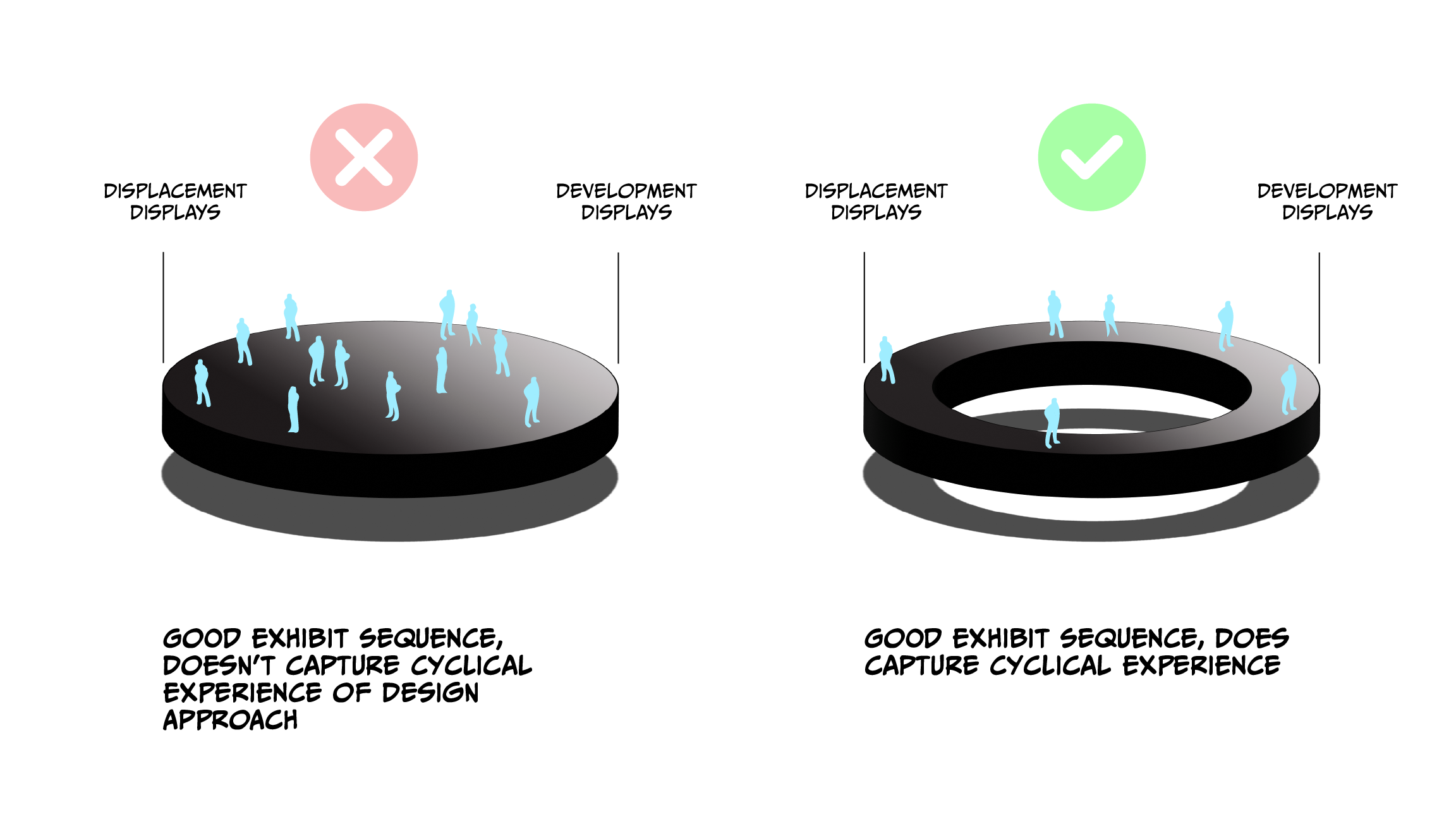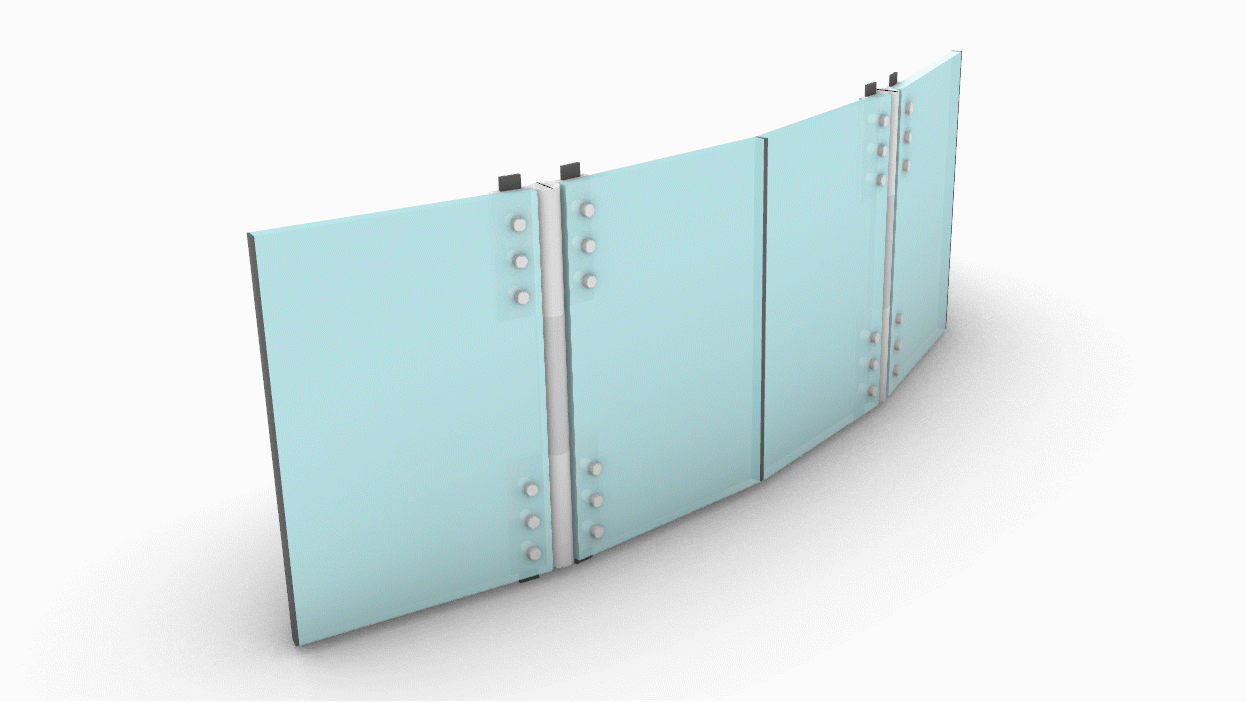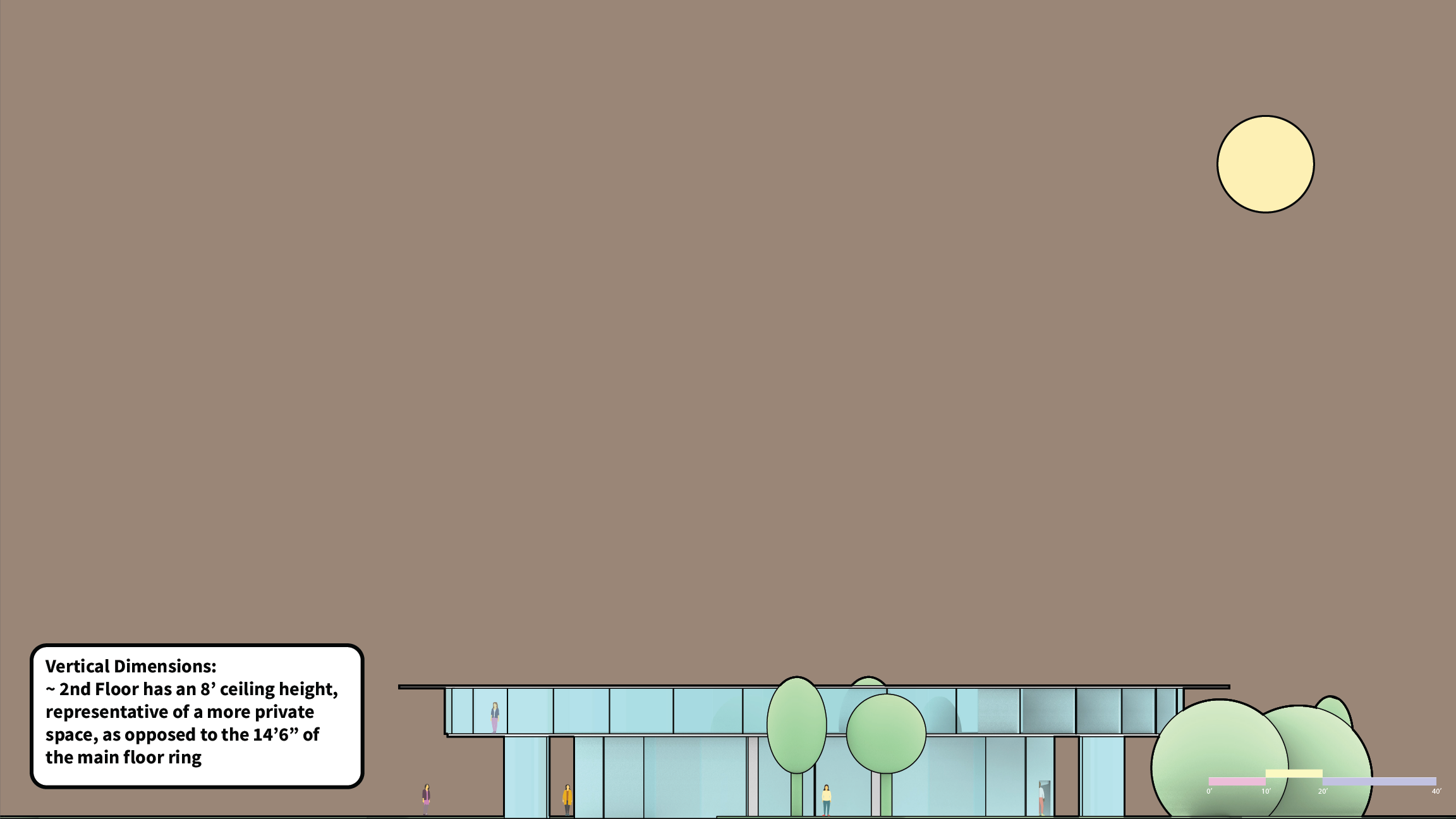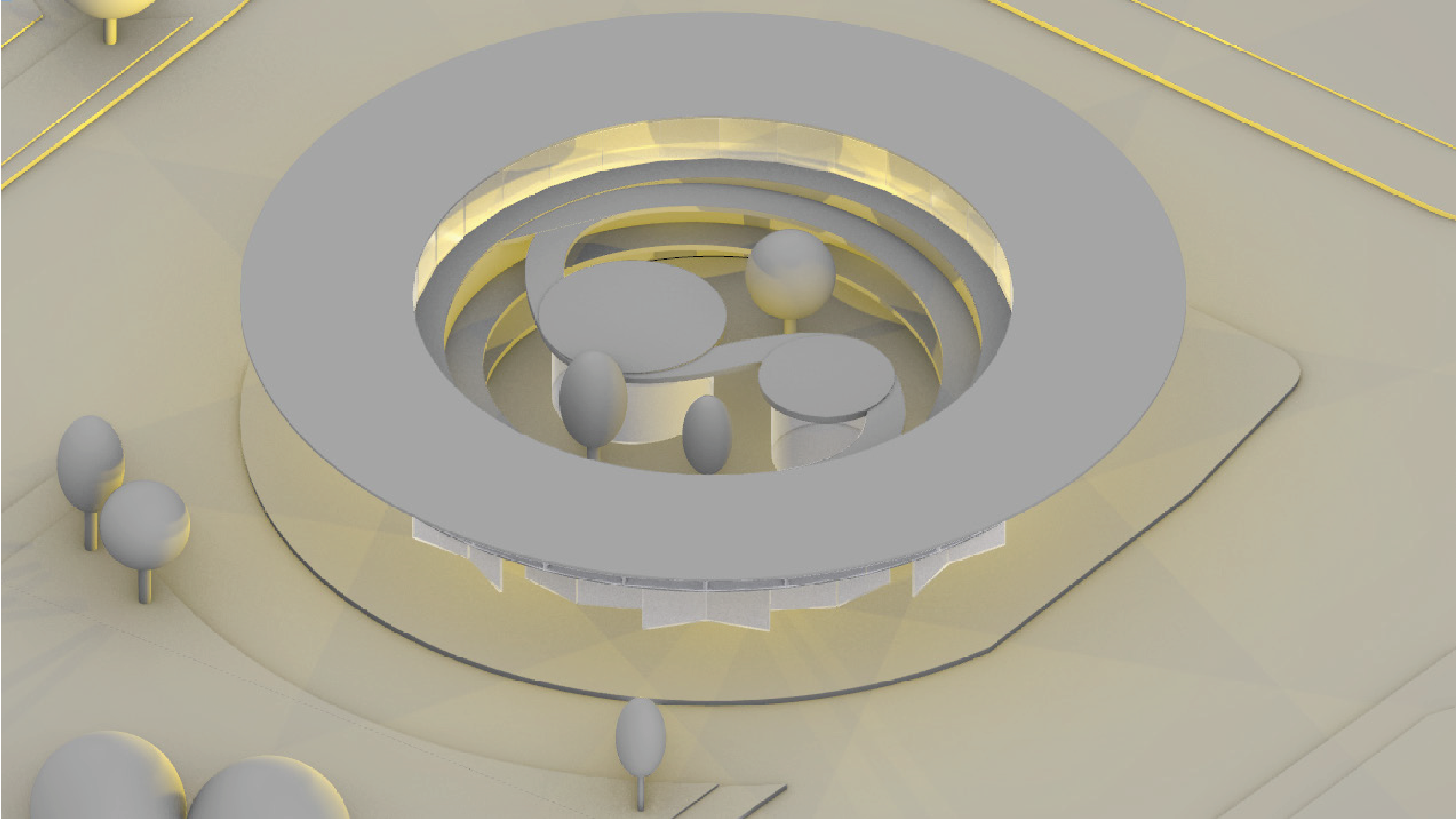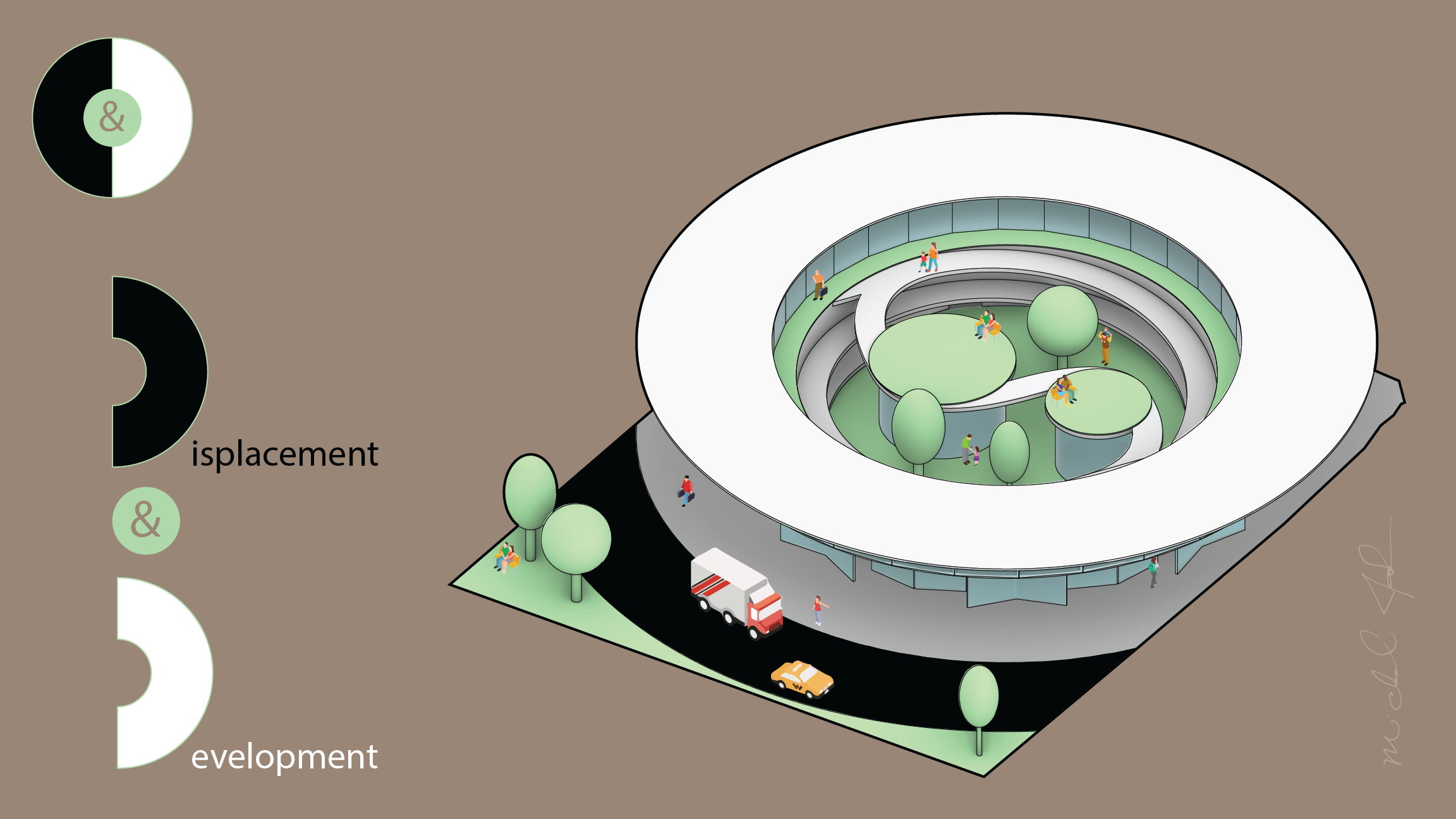Displacement & Development
Auraria History Museum
This neighborhood’s history is riddled with a vicious cycle of expanding development displacing people from their homes, a phenomenon typically labeled as evil. This, however, is a limited perspective.
Here’s why:
CU Denver was the most recent culprit for this supposed evil. In the 1970’s, the University used eminent domain to take land from low-income minority families living in single-family homes. Yet, the University does not have trouble filling its classrooms for this “evil” they have done. Even if every student knew this before applying, the University would still flourish. The hard reality is that development provides immense value for the population of a city, and therefore is often a very good thing. Nevertheless, the displacement that often precedes it is still bad. So this cycle of Displacement & Development is both good and bad. So begins the design…
Design Challenge
Given: Design a history museum that captures the experience of Auraria’s History.
Approach:
Auraria’s history has two aspects: Displacement and Development. Both will be represented in the exhibit experience.
Auraria’s history is a part of a cycle that has always been and always will be. The sequence will be a loop to reinforce the eternal condition of Auraria’s history.
There will be no start or end to the exhibit to further reinforce the cyclical nature of the relationship between Displacement and Development. People will be able to start the experience at any point along the way and end it at any point.
Design Response









The Street Frontage Problem…
Think about your experience of walking around Lower Downtown Denver. How often do those tall buildings make you feel welcomed? More often than not, we feel like we’re not supposed to go into a building unless we have a reason to. Even buildings that have floor-to-ceiling windows at ground level can still feel like someone else goes in there, not me. This is a public building that will serve the students of CU Denver as well as the downtown population of Denver. So, how do you design street frontage in a way that screams:
“All are welcome here!”
My design approach was to open the street frontage to the public in a way that allows everyone walking by effortless access to the exhibit no matter what direction they are coming from. Here’s how it works:

